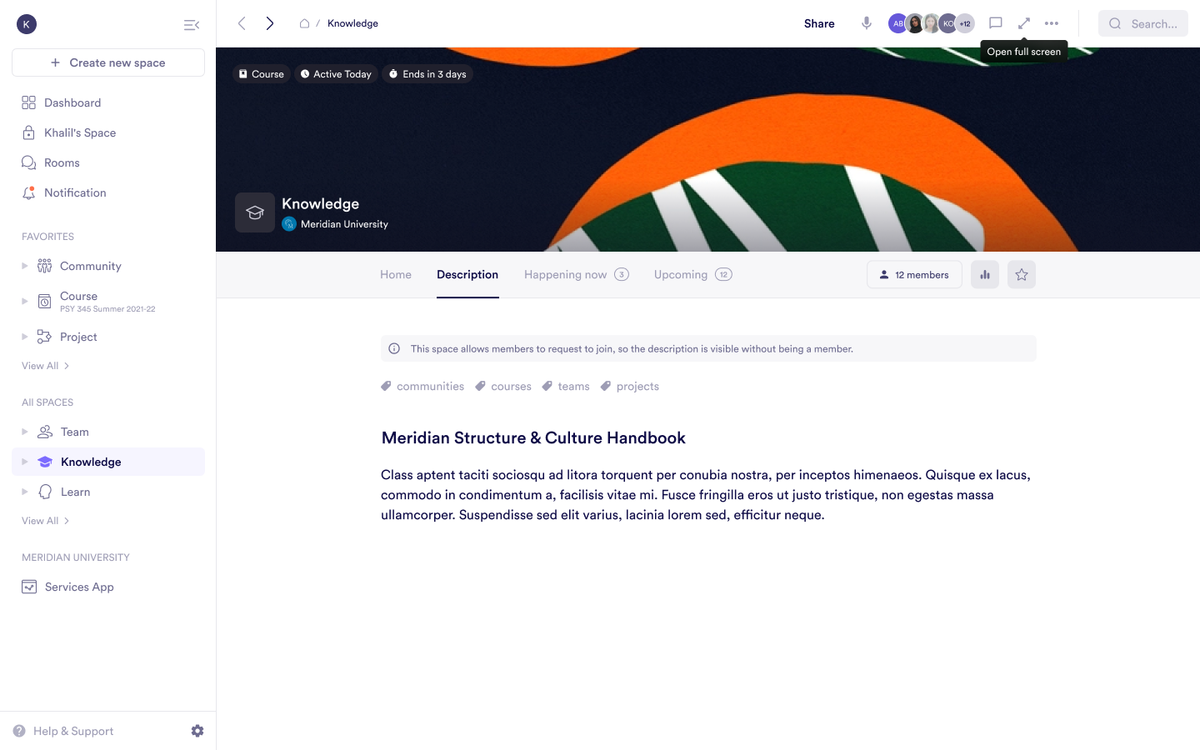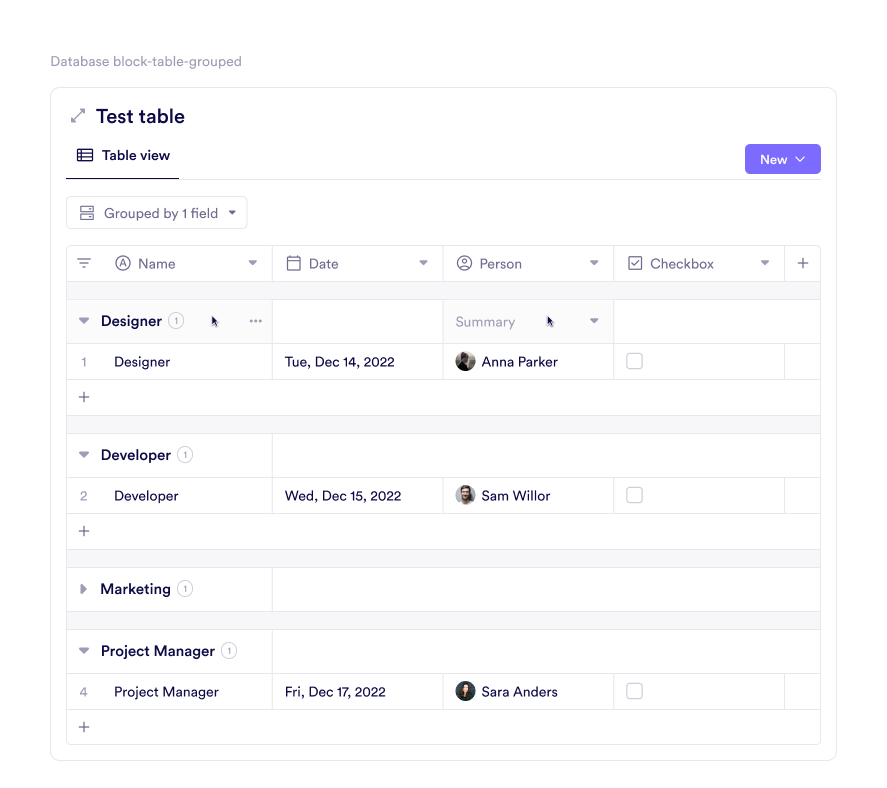Knowledge Base / Wiki
Create a knowledge base that transforms scattered ideas into an organized hub of information. With Pivot, you can create a system that supports collaboration while safeguarding sensitive information, and offer users an intuitive experience tailored to their expectations.

Your organization holds a wealth of information, but without a structured system, even the most valuable insights can go underutilized. Imagine giving your team or community access to a centralized repository that makes data not only accessible but actionable. Pivot’s versatile features, like customizable pages, interactive databases, and sharing permissions, allow you to create a knowledge base that’s as dynamic as the people using it. No more hunting for updates or struggling to organize essential resources; every detail is in its place, ready when you need it. Designed for clarity and collaboration, Pivot also functions as an async work platform, supporting distributed teams who need structure without the noise of constant meetings. Dive into the possibilities and discover how to design a knowledge base that works for you.
1. Segment Your Knowledge
Create allocated spaces to organize your knowledge base based on specific needs, audiences, categories of information, making complex collections of resources more navigable. For instance, you can house employee handbooks in one space, ensuring staff has a go-to resource for policies and procedures, while maintaining a separate space for customer documentation, like product guides or FAQs. Each space operates independently, allowing you to customize settings, permissions, and layouts for its intended users. This modular setup reflects Pivot’s strength as a virtual team platform, able to manage varied needs across teams and departments.

2. Craft Your Foundation with Pages and Databases
Crafting a comprehensive knowledge base starts with structure, and Pivot’s page and database blocks provide the blueprint. Pages become the backbone of your system, housing everything from step-by-step guides to critical resources. Add depth by nesting pages, turning complex topics into digestible sections. For a dynamic edge, integrate databases to organize and track key details. Imagine a training manual where each database entry opens into its own detailed page, offering depth without sacrificing simplicity. With this combination, each piece of information finds its rightful place, available at a glance. It’s an ideal setup for teams using Pivot as a remote team platform with asynchronous workflows that support flexibility and visibility.

3. Organize with Text Blocks and Headings
Break content into logical sections, using bold headings to act as guideposts through intricate topics. Text blocks allow you to highlight, link, or format information, ensuring every sentence is both functional and inviting to read. Picture an onboarding page where policies, FAQs, and resources are neatly categorized, reducing overwhelm and encouraging action. This attention to detail transforms your knowledge base into a space where users can navigate easily and uncover exactly what they need. These structured flows mirror the clarity needed in any team collaboration app focused on knowledge sharing.
4. Highlight Key Information with Quotes and Callouts
Transform critical insights into focal points using Pivot’s quotes and callouts. Quotes emphasize key takeaways, while callouts spotlight updates, announcements, or urgent instructions. A callout can detail an essential update, catching attention immediately, and a quote can highlight a guiding principle for your team. These elements elevate your content, drawing the reader’s eye to what matters most. By presenting important details in visually distinct ways, you ensure no vital information is overlooked, leaving your audience confident in the knowledge they gain. Pivot’s layout tools turn any wiki into a team chat app for ideas and institutional memory.

5. Visualize and Structure with Tables and Databases
Complex data finds simplicity in Pivot’s tables and databases. Tables present information in straightforward grids, ideal for quick references like feature comparisons or team rosters. For deeper functionality, databases expand possibilities, accommodating tasks like project tracking or categorizing research articles. Each entry can lead to its own detailed page, offering flexibility without losing structure.
6. Organize with Ease Using Tables of Contents
When navigating a comprehensive knowledge base, a well-structured table of contents turns potential chaos into intuitive order. Pivot’s table of contents automatically maps out the sections and headings on your page, providing a roadmap for readers. For instance, in a company policy guide, this feature can allow employees to pinpoint specific sections, like remote work guidelines or holiday policies, without unnecessary scrolling. It’s especially useful in extensive wikis or project documentation, where users need quick access to distinct topics. By offering a clear view of the content’s structure, you ensure that no valuable information is buried, and you save the readers time. These navigational aids are ideal for any remote team focused on clarity and efficiency.
7. Manage Access and Visibility
Maintaining control over access and collaboration is vital for any knowledge base or wiki. Pivot’s sharing and permission features provide robust options to regulate how your content is accessed, edited, and shared across teams or the public.
-Role-based permissions: Assign roles to members within your space to define who can view or edit specific sections. This hierarchical structure ensures precise control over your content’s accessibility.
-Group and public sharing: Share your knowledge base with select groups for focused collaboration or make sections publicly available to serve external audiences, such as customers or broader communities.
-Space membership features: Open your knowledge base for others to join, either by request or direct access. This flexibility is ideal for community-driven projects or initiatives requiring broader input.
-Hierarchical control: Manage permissions at different levels, from overarching spaces to nested blocks, tailoring access to the specific needs of your organization.
By combining advanced permissions with intuitive sharing capabilities, you ensure the hub remains a secure yet collaborative environment. These controls position Pivot as a forward-thinking SharePoint alternative with more flexible permissions for growing teams.
Your Knowledge Base, Reimagined
Building a knowledge base means establishing a resource that serves your organization’s evolving needs. Pivot provides practical features to share, organize, and secure information, ensuring your team has what it needs to work effectively:
-Customizable structure: Design pages, nested pages, and databases tailored to your needs.
-Effortless collaboration: Share resources and updates while managing access with precision.
-Dynamic visuals: Enrich content with images, embeds, and media for a more engaging experience.
-Granular permissions: Maintain control over who can view and edit specific sections.
-Evolving capabilities: Adapt your knowledge base as your team grows and needs change.
With Pivot, your knowledge base becomes as flexible and innovative as the ideas it contains.
Table of Contents